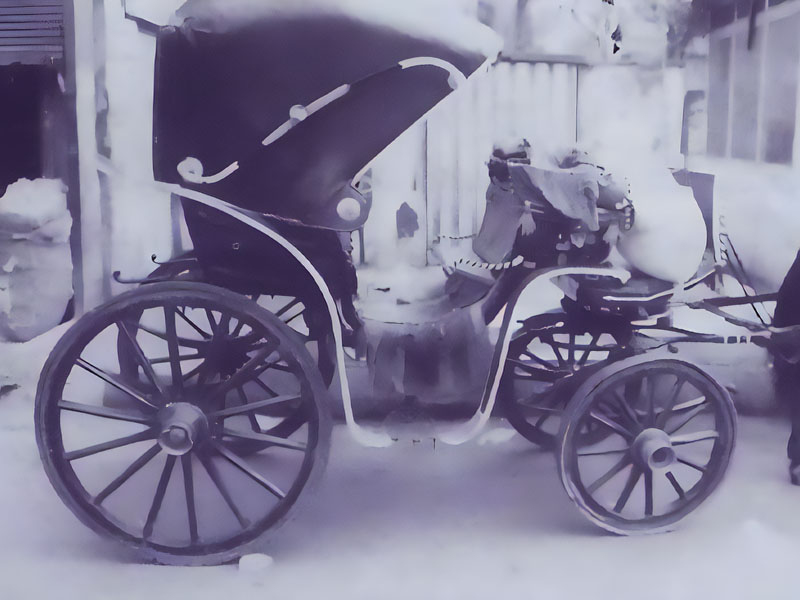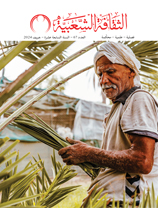The craft of Victoria and Cabriolet Industry: Anthropological study in the province of Diqhiyat
Issue 5

Mohamed Ghonime - EGYPT
There exist many types of victories, like the Italian “Rochelle”, and it is imported from France, the semi-rounding mentioned above, “Bizabi” that is closed and there is one of it in the military museum, another called “Kombil” from which the word “automobile”, i.e. car in French, is derived for their similarity, it is closed too, and it is used in marriage. It is worth seeing that Victoria is well decorated with copper, there are decor units in different shapes like fish as a symbol of large livelihood and progeny in the popular inherited. There are other units like “xamsa and xmisa” “five”, the hollow circle and semicircle, and all these units are believed to protect the cabriolet from envy, and in every side of the Victoria there is a coppery lantern. It is clear that the copper metal is an essential element in decorating Victoria that involves covers for the scale, kubud decoration, lantern, and also covers for the driver chair support, it is called “drapzine”, it is from iron metal covered by copper papers like the gold decorating the chairs. It consists of a yellow copper band circulating the drapzine. Also from copper in Victoria is the bell we heard accompanying the voice of the horses footfall when Victoria confronts a barrier. The bell is a round box in which there is a copper machine, and it is fixed under the driver’s feet and it protrudes from it a nail when the driver steps on it. What remains in the Victoria is its live part, namely the horse that wears numbers of clothes. The horse works about 12 hours a day; its nourishment costs about 3 Egyptian pounds. It consists of corn, beans, clover, and barley. The latter is the most important. The horse can draw Victoria at the age of 2 and half after had trained to draw, and keeps working till the age of 10 or more. The function of Victoria has changed from a period to another and from a city to the other. At the end of the 19th century, it was an essential mean of transportation for the high class, when ordinary people rode animals for moving. However, at the beginning of the 20th century, the use of Victoria by people has increased till the spreading of public transportations like “swars” cabs, tramway, and buses, but Victoria still exists in regions where these means are absent or are used by individuals. Some colonists mentioned that the number of Victoria was huge at the entrance of the railway stations in every city, particularly in “bab al Hadid”. Victoria costs from this place to Minyil quarter in the 40s of the 20th century 5 Egyptian pesetas, and it assures transportation in the capital of provinces and cities where there are no taxis, the latter mentioned mean has increased inside towns especially in winter as in Balqas, Sharbin, sunblawin, Dakrans, Manzila, and Matria. Victoria Industry is a popular craft that characterizes Balqas and Sharbin from other cities and villages of Daqlihiya. It was an inherited craft, and workshop is located in a bystreet inside the city, it’s area is 100m, but is far from the magazine about 500m and is located in another building, it’s area is about 300m and is used to deposit Victories after manufacturing. The researcher presents a historical survey of the craft activities in the society under research, he deals with the origin of the profession and its evolution, terminology of the craft activities and how the craft is perceived by its employers.




































































